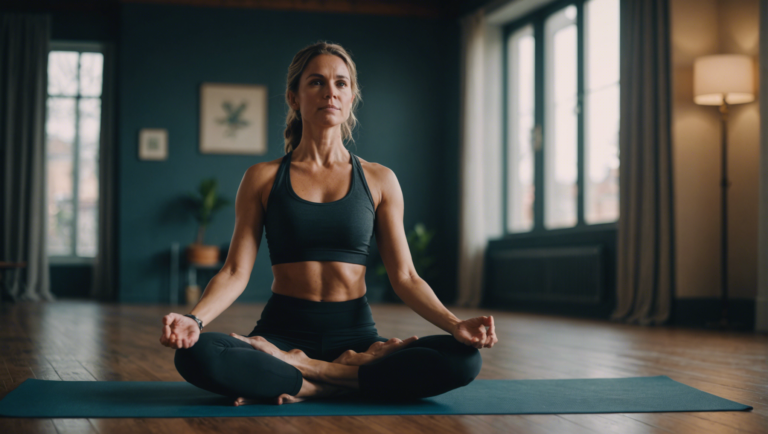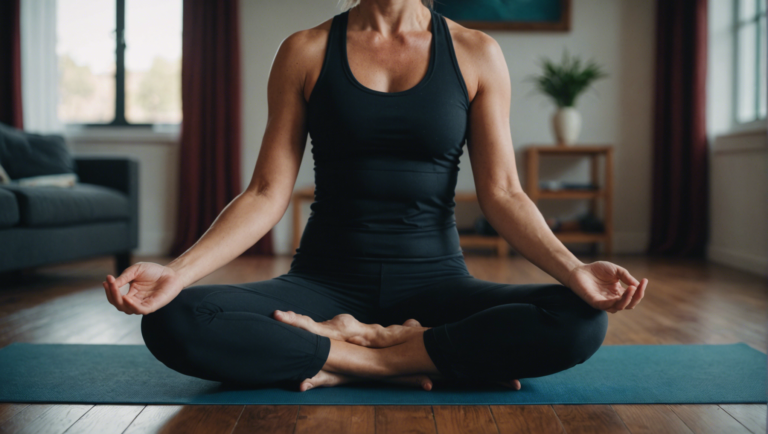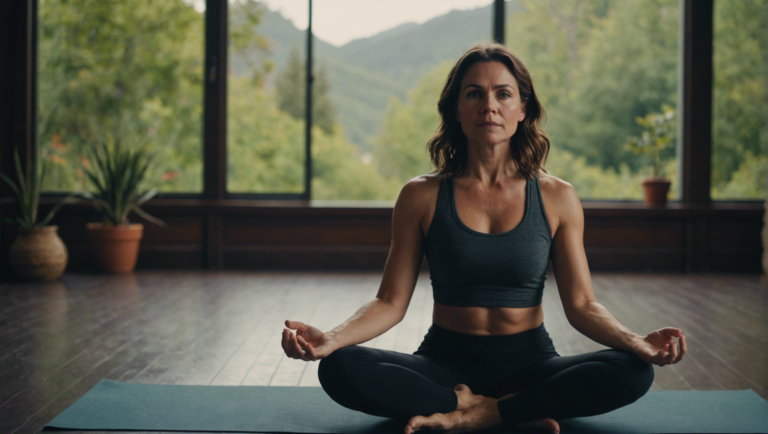Essential Guidelines For Practicing Paddle Board Yoga
Benefits of Paddle Board Yoga for Mind and Body Wellness
Paddle Board Yoga has gained popularity in recent years as a unique way to enhance both physical and mental well-being. By combining the practice of yoga with the challenge of balancing on a paddleboard in the water, practitioners can experience a multitude of benefits for their mind and body. Let’s explore the various advantages of engaging in Paddle Board Yoga.
Physical Benefits of Paddle Board Yoga
Practicing yoga on a paddleboard adds an extra level of difficulty and engagement to traditional yoga poses. The instability of the board requires participants to engage their core muscles more intensely to maintain balance. This results in a great workout for the core, legs, arms, and back muscles. Additionally, the gentle movements required to transition between poses help improve flexibility, strength, and overall body awareness.
Mental Benefits of Paddle Board Yoga
The serene environment of practicing yoga on the water can have a profoundly calming effect on the mind. The sound of water, the gentle breeze, and the connection with nature can help reduce stress and promote relaxation. Moreover, the concentration needed to stay balanced on the board helps to clear the mind and improve focus. Paddle Board Yoga offers a unique opportunity to meditate and find mental clarity amidst the peaceful surroundings of the water.
Improved Mind-Body Connection
Paddle Board Yoga is a powerful practice for enhancing the mind-body connection. The combination of yoga poses and the element of water creates a harmonious environment for aligning body movements with breath awareness. Balancing on the board requires full concentration, which helps participants stay present in the moment and connect deeply with their bodies. This heightened awareness can lead to better coordination, improved posture, and a more profound sense of overall well-being.
Enhanced Relaxation and Stress Reduction
One of the most significant benefits of Paddle Board Yoga is its ability to promote relaxation and reduce stress. The gentle movements, combined with the soothing qualities of being on the water, create a tranquil experience that allows practitioners to unwind and let go of tension. The meditative aspects of the practice can help calm the mind, release anxiety, and promote a sense of inner peace.
Paddle Board Yoga offers a holistic approach to improving both physical and mental well-being. By integrating yoga practice with the tranquility of the water, participants can experience a unique and rewarding way to enhance their overall health. Whether you are a seasoned yogi or a beginner, trying Paddle Board Yoga can bring a refreshing and rejuvenating perspective to your wellness routine. Embrace the challenge, find your balance, and reap the numerous benefits that Paddle Board Yoga has to offer.
Tips for Choosing the Right Paddle Board for Yoga Practices
Paddle board yoga is a unique and exciting way to practice yoga while enjoying the water and outdoors. To fully enjoy this experience, selecting the right paddle board is crucial. Here are some essential guidelines to consider when choosing the perfect paddle board for your yoga practice.
Factors to Consider When Choosing a Paddle Board
When selecting a paddle board for yoga, there are several key factors to keep in mind to ensure a safe and enjoyable experience:
Stability
Stability is a critical factor when choosing a paddle board for yoga. Look for a board that is wide and stable, as this will provide you with a solid foundation for various yoga poses. A wider board offers more stability and allows you to move through your poses with confidence.
Length and Width
The length and width of the paddle board are important considerations. A longer board provides more stability in the water, while a wider board offers better balance. For yoga practice, a board that is at least 10 feet long and 32 inches wide is recommended for most practitioners.
Thickness
The thickness of the board also plays a role in its stability. Thicker boards sit higher on the water, making them more stable for yoga practice. A board that is around 6 inches thick is ideal for paddle board yoga.
Material and Weight Capacity
Choose a paddle board made from durable and lightweight materials, such as inflatable PVC or epoxy fiberglass. These materials are sturdy enough to support your yoga practice while remaining lightweight and easy to transport. Additionally, consider the weight capacity of the board to ensure it can support your weight and offers enough buoyancy for your practice.
Deck Pad
A comfortable and non-slip deck pad is essential for paddle board yoga. Look for a board with a soft and grippy surface that provides traction for your hands and feet during yoga poses. A deck pad with a good grip will help prevent slipping and enhance your overall yoga experience on the water.
Portability and Storage
Consider the portability and storage options of the paddle board. If you plan to travel with your board or have limited storage space, choose an inflatable board that can be easily deflated and packed into a compact size. Inflatable paddle boards are convenient for transportation and storage, making them an excellent choice for yogis on the go.
Final Thoughts
Choosing the right paddle board for your yoga practice is essential for a safe, enjoyable, and rewarding experience on the water. By considering factors such as stability, length, width, thickness, material, deck pad, portability, and storage, you can select a paddle board that meets your needs and enhances your paddle board yoga practice. So, take your time to research and test out different boards to find the perfect fit for your yoga journey.
Essential Yoga Poses to Master for Paddle Board Yoga
Understanding Paddle Board Yoga
Paddle Board Yoga, also known as SUP Yoga (Stand-Up Paddleboard Yoga), combines traditional yoga practice with the added challenge of balancing on a paddleboard in the water. It offers a unique and serene way to connect with nature while improving your balance, strength, and focus. To fully enjoy and benefit from Paddle Board Yoga, mastering essential yoga poses is crucial.
Mountain Pose (Tadasana)
The Mountain Pose is a foundational posture in yoga that helps improve posture, balance, and focus. To practice this pose on a paddleboard, stand with your feet hip-width apart, spine tall, and arms relaxed by your sides. Engage your core and gaze softly ahead, finding a focal point to help maintain balance amidst the gentle movement of the water beneath you.
Downward-Facing Dog (Adho Mukha Svanasana)
Downward-Facing Dog is an excellent pose for strengthening the arms, shoulders, and core while stretching the hamstrings and calves. To perform this pose on a paddleboard, start in a plank position with your hands shoulder-width apart. Lift your hips up and back, forming an inverted V shape with your body. Keep a slight bend in your knees to prevent any strain and maintain stability on the board.
Warrior II (Virabhadrasana II)
Warrior II is a powerful standing pose that enhances strength, stability, and concentration. From a high lunge position on the paddleboard, spread your arms wide, aligning your wrists with your shoulders. Turn your back foot perpendicular to the board and bend your front knee directly over your ankle. Gaze over your front fingertips, sinking deeper into the pose while maintaining a steady breath.
Tree Pose (Vrikshasana)
The Tree Pose is ideal for improving balance and focus, making it a valuable addition to your Paddle Board Yoga practice. Begin by shifting your weight to one foot while lifting the sole of the other foot to press against the inner thigh or calf of your standing leg. Find your balance and bring your palms together at heart center or extend them overhead, swaying gently with the movement of the water.
Corpse Pose (Savasana)
Savasana, also known as Corpse Pose, is a vital posture for relaxation and integration at the end of your Paddle Board Yoga session. Lie flat on your back with your arms and legs comfortably spread, palms facing up. Close your eyes, soften your breath, and allow yourself to surrender completely, feeling supported by the water beneath you.
Mastering these essential yoga poses for Paddle Board Yoga will not only enhance your physical strength and balance but also deepen your connection with nature and cultivate a sense of inner peace and tranquility. Embrace the challenge of practicing yoga on a paddleboard, and let the gentle flow of the water inspire and invigorate your practice.
Safety Precautions and Guidelines for Paddle Board Yoga Beginners
Paddle board yoga is a thrilling and rejuvenating way to combine the serenity of yoga with the excitement of paddle boarding. However, for beginners, it’s essential to prioritize safety precautions and guidelines to ensure a pleasant and secure experience on the water. Proper preparation and adherence to safety measures are crucial for beginners venturing into paddle board yoga. Here are some essential guidelines to keep in mind before embarking on your paddle board yoga journey.
Understanding the Basics of Paddle Board Yoga
Before diving into paddle board yoga, it’s important to have a solid foundation in both paddle boarding and yoga individually. Familiarize yourself with basic paddle boarding techniques such as proper stance, paddling strokes, and maintaining balance on the board. Similarly, ensure you have a good grasp of fundamental yoga poses and breathing techniques that will be practiced on the paddle board. Building a strong base in both disciplines will significantly enhance your paddle board yoga experience and prevent potential mishaps.
Choosing the Right Location
Selecting the appropriate location for your paddle board yoga session is key to ensuring your safety and enjoyment. Opt for calm and relatively shallow waters with minimal boat traffic to minimize distractions and hazards. Avoid strong currents, choppy waters, or areas with underwater obstacles that could pose a risk to your practice. Additionally, check the weather forecast before heading out to avoid unexpected rough conditions that could jeopardize your session.
Essential Safety Gear
Before hitting the water, ensure you have the necessary safety gear to protect yourself during your paddle board yoga practice. A properly fitting personal flotation device (PFD) is non-negotiable, especially for beginners. Inflatable PFDs are popular choices as they provide buoyancy without restricting movement. Additionally, consider wearing a leash to keep you attached to your board in case of a fall. Sunscreen, a whistle, and a first aid kit are also essential items to have on hand.
Practicing Mindful Awareness
Mindful awareness is crucial while engaging in paddle board yoga. Stay present in the moment, focusing on your breath and body alignment to maintain balance and prevent falls. Be conscious of your surroundings and any changes in water conditions. Listen to your body and avoid pushing yourself beyond your limits to prevent injuries. Mindful awareness not only enhances your practice but also ensures a safe and rewarding experience on the water.
Supervision and Training
For beginners, seeking supervision and training from experienced paddle board yoga instructors is highly recommended. Enrolling in a beginner-friendly paddle board yoga class or hiring a private instructor can provide valuable guidance on proper techniques, safety protocols, and overcoming challenges unique to practicing yoga on a paddle board. Instructors can offer personalized feedback to help you improve your skills and confidence in the water.
Paddle board yoga is a fantastic way to connect with nature, rejuvenate your mind and body, and enhance your yoga practice. By adhering to essential safety precautions and guidelines, beginners can enjoy a safe and fulfilling paddle board yoga experience. Remember to prioritize safety, build a strong foundation in both paddle boarding and yoga, choose suitable practice locations, wear proper safety gear, practice mindful awareness, and seek supervision and training when starting out. With the right preparation and mindset, paddle board yoga can offer a unique and transformative journey on the water.
Incorporating Breathing Techniques into Your Paddle Board Yoga Routine
Breathing Techniques into Your Paddle Board Yoga Routine
Yoga is not just about the physical postures; it also places a strong emphasis on the breath. When practicing yoga on a paddle board, mastering breathing techniques becomes even more crucial. By incorporating specific breathing exercises into your paddle board yoga routine, you can enhance your practice, improve your focus, and increase your overall sense of well-being.
The Importance of Breath in Paddle Board Yoga
Breath is considered the bridge between the body and the mind in yoga. In paddle board yoga, where you are balancing on an unstable surface, focusing on your breath becomes essential to maintain stability and concentration. By syncing your movements with your breath, you can flow more gracefully through each pose and create a sense of moving meditation on the water.
Deep Belly Breathing
One of the most basic yet powerful breathing techniques to incorporate into your paddle board yoga practice is deep belly breathing. This technique involves breathing deeply into your belly, allowing it to rise on the inhale and fall on the exhale. Deep belly breathing promotes relaxation, reduces stress, and helps you connect with your body’s natural rhythm.
Ocean Breath (Ujjayi Pranayama)
Ujjayi pranayama, also known as ocean breath, is a breathing technique commonly used in yoga. By slightly constricting the back of your throat while breathing in and out through your nose, you create a gentle oceanic sound. Practicing ujjayi breath during paddle board yoga can help regulate your heat, increase your focus, and cultivate a sense of inner calm.
Alternate Nostril Breathing (Nadi Shodhana)
Nadi shodhana, or alternate nostril breathing, is a balancing breathing technique that can help harmonize the left and right hemispheres of the brain. To practice this technique, use your right thumb to close your right nostril while inhaling through your left nostril. Then, close your left nostril with your ring finger and exhale through your right nostril. Repeat on the other side. Nadi shodhana is beneficial for reducing anxiety, promoting mental clarity, and balancing your energy.
Breath Awareness in Challenging Poses
When you find yourself in challenging poses during paddle board yoga, such as balances or inversions, maintaining steady and focused breathing is key. By keeping your breath calm and even, you can stabilize your movements, quiet the mind, and stay present in the moment. Remember that your breath is your anchor, guiding you through each pose with grace and ease.
Breathing techniques into your paddle board yoga routine is not only beneficial for your physical practice but also for your mental and emotional well-being. By cultivating awareness of your breath and exploring different pranayama techniques, you can deepen your yoga practice on the water and experience a profound sense of connection with nature, yourself, and the present moment. Practice these breathing techniques consistently, and you will not only improve your paddle board yoga skills but also enhance your overall quality of life.
Conclusion
As you embark on your paddle board yoga journey, remember that the benefits extend far beyond the physical aspects. The combination of breath, movement, and the gentle bobbing of the water creates a serene and meditative experience that nurtures both body and mind. The essence of paddle board yoga lies in finding balance, both on the board and within yourself. By immersing yourself in this practice, you not only enhance your physical fitness but also tap into a deeper sense of inner peace and mindfulness.
Choosing the right paddle board is crucial to ensure a stable and comfortable practice. Consider the size, width, and material of the board to match your skill level and yoga practice. Investing in a quality board that provides stability and durability will enhance your overall experience on the water.
Mastering essential yoga poses for paddle board yoga requires patience, practice, and a sense of adventure. Start with foundational poses such as Downward-Facing Dog, Warrior II, and Tree Pose to build strength, stability, and flexibility on the water. As you progress, challenge yourself with more advanced poses like Crow Pose or Headstand to further test your balance and focus.
Safety should always be a top priority, especially for beginners. Before you hit the water, ensure you are equipped with a personal flotation device, familiarize yourself with the water conditions, and practice falling safely away from the board. Stay within your comfort zone and listen to your body to prevent injuries and enjoy a safe paddle board yoga experience.
Breath is the bridge between the body and mind in yoga, and incorporating proper breathing techniques into your paddle board practice can enhance your overall well-being. Focus on deep, steady breaths that synchronize with your movements to cultivate a sense of calm and presence on the water. Practice pranayama techniques such as Ujjayi Breath or Nadi Shodhana to deepen your connection to the breath and enhance your yoga practice.
By integrating these essential guidelines into your paddle board yoga routine, you can elevate your practice to new levels of holistic wellness. Whether you are seeking physical fitness, mental clarity, or simply a renewed sense of serenity, paddle board yoga offers a transformative experience that nurtures your mind, body, and spirit. Embrace the challenge, find your balance, and immerse yourself in the beauty of yoga on the water. Enjoy the journey, and let the peaceful rhythm of the waves guide you towards a deeper connection with yourself and the world around you.


